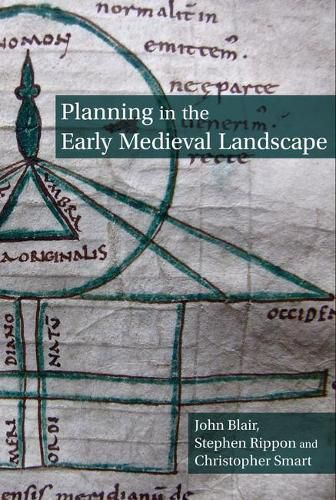Readings Newsletter
Become a Readings Member to make your shopping experience even easier.
Sign in or sign up for free!
You’re not far away from qualifying for FREE standard shipping within Australia
You’ve qualified for FREE standard shipping within Australia
The cart is loading…






The extent to which Anglo-Saxon society was capable of large-scale transformations of the landscape is hotly disputed. This interdisciplinary book - embracing archaeological and historical sources - explores this important period in our landscape history and the extent to which buildings, settlements and field systems were laid out using sophisticated surveying techniques. In particular, recent research has found new and unexpected evidence for the construction of building complexes and settlements on geometrically precise grids, suggesting a revival of the techniques of the Roman land-surveyors (Agrimensores). Two units of measurement appear to have been used: the ‘short perch’ of 15 feet in central and eastern England, where most cases occur, and the ‘long perch’ of 18 feet at the small number of examples identified in Wessex. This technically advanced planning is evident during two periods: c.600-800, when it may have been a mostly monastic practice, and c.940-1020, when it appears to have been revived in a monastic context but then spread to a wider range of lay settlements.
Planning in the Early Medieval Landscape is a completely new perspective on how villages and other settlement were formed. It combines map and field evidence with manuscript treatises on land-surveying to show that the methods described in the treatises were not just theoretical, but were put into practice. In doing so it reveals a major aspect of previously unrecognised early medieval technology.
$9.00 standard shipping within Australia
FREE standard shipping within Australia for orders over $100.00
Express & International shipping calculated at checkout
Stock availability can be subject to change without notice. We recommend calling the shop or contacting our online team to check availability of low stock items. Please see our Shopping Online page for more details.
The extent to which Anglo-Saxon society was capable of large-scale transformations of the landscape is hotly disputed. This interdisciplinary book - embracing archaeological and historical sources - explores this important period in our landscape history and the extent to which buildings, settlements and field systems were laid out using sophisticated surveying techniques. In particular, recent research has found new and unexpected evidence for the construction of building complexes and settlements on geometrically precise grids, suggesting a revival of the techniques of the Roman land-surveyors (Agrimensores). Two units of measurement appear to have been used: the ‘short perch’ of 15 feet in central and eastern England, where most cases occur, and the ‘long perch’ of 18 feet at the small number of examples identified in Wessex. This technically advanced planning is evident during two periods: c.600-800, when it may have been a mostly monastic practice, and c.940-1020, when it appears to have been revived in a monastic context but then spread to a wider range of lay settlements.
Planning in the Early Medieval Landscape is a completely new perspective on how villages and other settlement were formed. It combines map and field evidence with manuscript treatises on land-surveying to show that the methods described in the treatises were not just theoretical, but were put into practice. In doing so it reveals a major aspect of previously unrecognised early medieval technology.